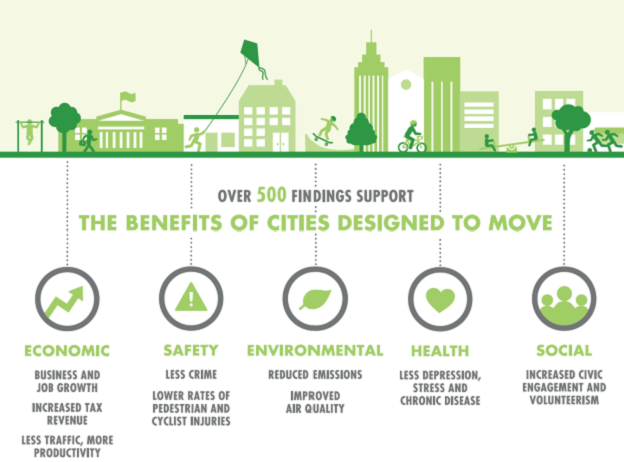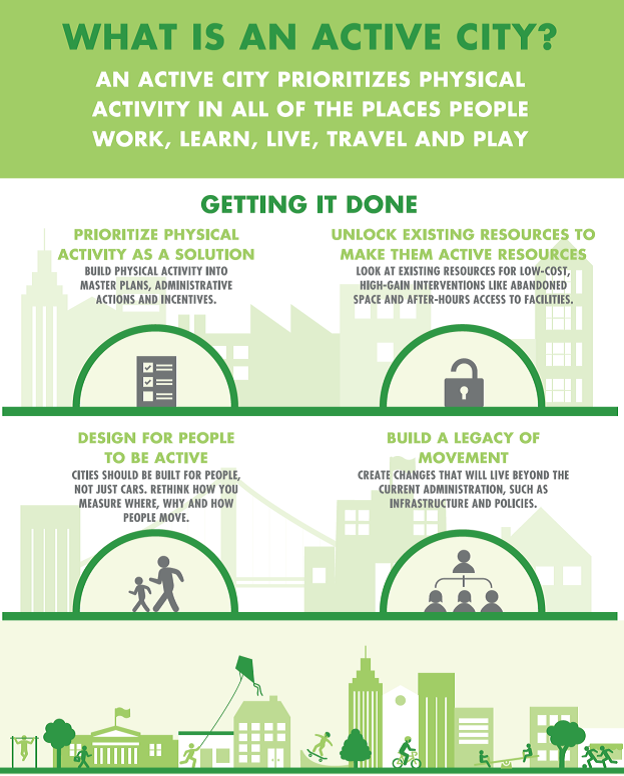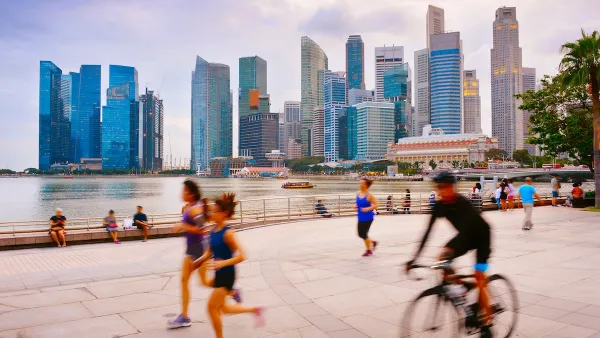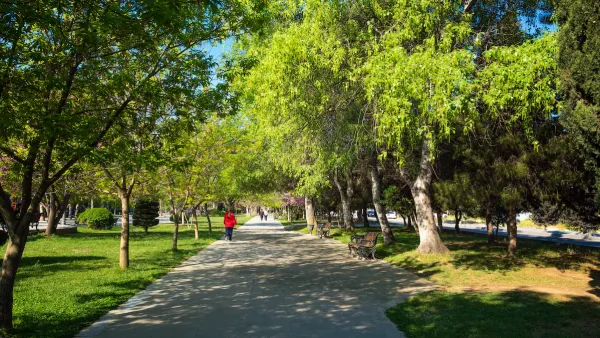The "Active Cities Report" by the Designed to Move coalition provides detailed guidance concerning how to integrate physical activity into community design, and information on the economic, social and environmental benefits that result.

Designed to Move is a coalition of more than 80 public, private, and civil sector organizations dedicated to ending the growing epidemic of physical inactivity. Their newest report, Active Cities: A Guide for City Leaders, provides detailed information concerning why and how to incorporate healthy physical activity into community design.

The report explains:
This is about making our cities more competitive.
The research is clear on this claim. Integrating physical activity into the places we work, live, learn, travel, and play is the only way to ensure we move enough to thrive.
Physical inactivity is bankrupting economies at the national level, but it is felt most acutely by the world's cities—often through negative impacts on the health of people, economies, and the environment. This is bad news for cities and their citizens. The good news is there's a solution.
Our bodies are designed to move. Our cities should be too.
Higher levels of physical activity are associated with positive outcomes for most of the things that matter to city leaders. When people move more, crime, pollution, and traffic go down. Productivity, school performance, property values, health, and well-being improve drastically.
Cities that make physical activity a priority, convert existing spaces into active spaces, and design environments for people to be active will create a legacy of physical activity. These active cities will be better off by almost every possible measure.
Our purpose here is to provide a blueprint for creating active cities, whatever their size and wherever in the world they may be.

This report is based on an extensive body of academic research described in the article, "Co-benefits of Designing Communities for Active Living: An Exploration of Literature," written by a team lead by Dr. James F Sallis, recently published in the International Journal of Behavioral Nutrition and Physical Activity.
FULL STORY: Active Cities Report - A Guide for City Leaders

National Parks Layoffs Will Cause Communities to Lose Billions
Thousands of essential park workers were laid off this week, just before the busy spring break season.

Retro-silient?: America’s First “Eco-burb,” The Woodlands Turns 50
A master-planned community north of Houston offers lessons on green infrastructure and resilient design, but falls short of its founder’s lofty affordability and walkability goals.

Delivering for America Plan Will Downgrade Mail Service in at Least 49.5 Percent of Zip Codes
Republican and Democrat lawmakers criticize the plan for its disproportionate negative impact on rural communities.

Test News Post 1
This is a summary

Test News Headline 46
Test for the image on the front page.

Balancing Bombs and Butterflies: How the National Guard Protects a Rare Species
The National Guard at Fort Indiantown Gap uses GIS technology and land management strategies to balance military training with conservation efforts, ensuring the survival of the rare eastern regal fritillary butterfly.
Urban Design for Planners 1: Software Tools
This six-course series explores essential urban design concepts using open source software and equips planners with the tools they need to participate fully in the urban design process.
Planning for Universal Design
Learn the tools for implementing Universal Design in planning regulations.
EMC Planning Group, Inc.
Planetizen
Planetizen
Mpact (formerly Rail~Volution)
Great Falls Development Authority, Inc.
HUDs Office of Policy Development and Research
NYU Wagner Graduate School of Public Service





























